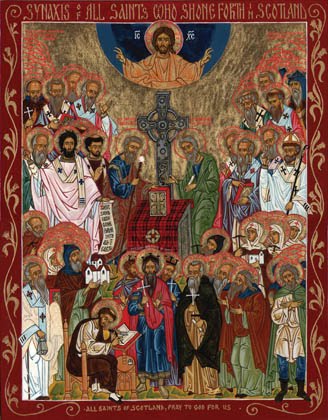Monday, 19 December 2011
St. Ninian, Enlightener of the Picts
Ninian lived at a time when monasticism was sweeping the Roman Empire and attracting many of the most serious Christians. He settled in what is now southwestern Scotland; in the IV Century, "Alba", the country north of Hadrian's Wall, was an ethnically and culturally heterogeneous territory inhabited by non-Indo-European Picts, Q-Celtic-speaking "Scots" from Ireland, P-Celtic-speaking North Britons, Latin-speaking Romans, and possibly the first waves of English-speaking Saxons.
St. Ninian built a monastery at Casa Candida (known since the early Middle Ages by the Old English equivalent "Whithorn"). Besides pursuing the ascetic life, he and his brethren attempted to revive the faltering Romano-British churches of the North, and reached out to the pagans as well, especially it would seem to the Picts. The extremely ancient Pictish Orthodox churches dedicated to St. Ninian or to St. Martin of Tours, the patron saint of the Whithorn community and Ninian's role model, in places as remote as the Orkneys and Shetland attest that this missionary outreach must have been both rapid and amazingly extensive.
After St. Ninian's repose, Whithorn continued for centuries as one of the most important monastic and educational centres of Orthodox Alba. During the period of Anglo-Saxon rule, St. Bede's mention of Ninian in the Ecclesiastical History made the saint famous all over Europe, and his relics were one of the three chief objects of pilgrimage in mediæval Scotland. (Unfortunately, they were destroyed by the Calvinists.)
Norman Hugh Redington
Subscribe to:
Post Comments (Atom)


No comments:
Post a Comment